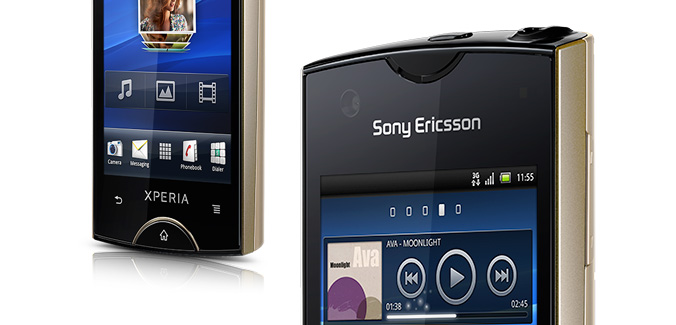Gamification. It’s a horrible word, reeking of trendification, buzzification and bandwagonification. But ignore the word itself, and look at the idea behind it – introducing the playing of games into people’s interactions with companies. Can the idea help a business such as a mobile operator make more money, improve its customer interactions and customer loyalty, or is it likely to be an annoyance?
In this guest post on Mobile Europe, Velti’s Mobile Solutions Manager Tom Twigg outlines the thinking behind adopting some elements of game-play into customer interactions, and gives results of where it has been tried. Now, if only we didn’t have to call this process gamification…
Keith Dyer
Guest post from Velti’s Tom Twigg:
It has been widely acknowledged by brands and agencies that successful marketing and advertising is about connecting with people, not just speaking at them. With consumer attention being increasingly fought for by numerous forms of entertainment and advertising messages, is there something that marketers can consider to ensure they connect with consumers over a longer period of time than an advertising impression? Well, applying the mechanisms from the highly successful world of gaming could provide the answer.
It’s no secret that over the past couple of decades, gaming has become big business, especially when you consider that:
- There have been 225m Mario games sold worldwide, about the same number as iTunes accounts
- Virtual goods are set to grow to over $653m in 2011 in the US alone – roughly the equivalent to the gross takings of the first Pirates of the Caribbean film
- The video game, Modern Warfare: Black Ops grossed $1bn sales within 6 weeks of being released – The entire set of Harry Potter films spanning 10 years, grossed $4bn (excluding the latest film)
- 927m hours are spent gaming on Facebook each month. This equates to every adult in London doing it as a full-time job!
Gamification is the process of taking the mechanics that make games engaging and applying them to non-games. There are many gaming mechanics that can be applied to real-world problems, however there are five key elements outlined by SCVNGR back in 2010:
Points: Points are everywhere, and they’re often used in non-game apps as a way to denote achievement. Points also measure the user’s achievements in relation to others and work to keep the user motivated for the next reward or level. They can even double as action-related currency.
Badges: While badges have their origins in the physical world, Foursquare popularised the digital variety with its set of real-life merit badges.
Levels: Zynga uses levels to make the seemingly mundane task of tending to crops all the more enticing. Whereas the EpicWin! App on iPhone used levels to provide incentive for doing everyday chores such as taking out the rubbish.
Leader-boards: Leader-boards rank users and work to motivate and encourage them to become players. Foursquare started with city-centric leader-boards, but now places the emphasis on ranking users against their friends. Earn a few points for a check-in and Foursquare will show users which of their friends they’ve just overtaken on the leader-board.
Challenges: These range from the simple to complex and often involve communal activity or group play. In our workshop at The Cannes Lion Festival this year, we had teams work to solve a number of different tasks using game and mobile mechanics, including how to drive footfall to a local record store.
Using these mechanics, gamification looks to reward players in two ways:
- Intrinsic rewards: The participant enjoys completing the task and gets a reward simply by taking part. The most engaging computer games are intrinsically rewarding.
- Extrinsic rewards: The task itself is not enjoyable, but the end reward motivates you to participate. For instance encouraging people to perform chores that they ordinarily consider boring, such as completing surveys, shopping, or reading web sites.
Sometimes these processes can be so subtle that we hardly notice them. Take a social networking profile page for example, there may well be a bar at the top saying your profile is 85% complete and that you only need to perform action ‘x’ and ‘y’ — one of which is usually a sharing or social activity, in order to complete the profile. It’s a simple but often effective gaming mechanic, perhaps more familiar in a coffee shop loyalty card scheme, buy nine coffees and get the tenth for free. By showing that a customer is close to a reward, it spurs them on further to participate more frequently in order to get that reward. So what part can mobile play in all this?
If we combine game mechanics with mobile, services can become incredibly powerful and sticky. Take FourSquare for example, it has people repeatedly reaching for their mobile to check in at different places to not only gain actual rewards like a free drink or discounts, but just vying to be Mayor – it almost becomes a status level-up and a boasting point to friends, peers and rivals.
An example of the sort of campaigns Velti has been running with operators and implementing game mechanics is our work with T-Mobile USA. T-Mobile’s ‘4G PayDay’ trivia contest is part of an integrated mobile initiative to engage and reward T-Mobile customers. By leveraging entertaining content, the 4G PayDay campaign is designed to celebrate T-Mobile’s 4G network leadership as America’s Largest 4G Network.
T-Mobile customers enter by texting “START” to 4444 to review and accept the game rules and participate in the 4G PayDay mobile trivia contest. The goal of the game is to correctly answer the most consecutive multiple-choice questions delivered via text message within one hour. Players can text “HINT” to narrow choices or “SKIP” to pass a question. (Both options are limited to three per game and cost $1.00 each plus tax.) The game ends with one incorrect answer or by reaching the one-hour time limit. Customers are allowed to play up to three games each day. The player with the most consecutive correct answers in one game each day will win the daily $4,000 (or “4Gs”) prize. The weekly Audi Q5 vehicle winner is determined by the most consecutive correct answers in a single game for the week. In the event of a tie, the most consecutive answers in the shortest amount of time will be declared the winner.
These types of campaigns have also seen huge take up across Europe with over 11 million consumers participating in SMS gameplay in the last six months alone. These campaigns have resulted in almost 103 million interactions with operators, with around 18% of operator’s customer base participating and each customer interacting up to 20 times.
Operators have enjoyed the success of these campaigns so much that some are on their fifth (customer in Romania) or sixth (customer in Pakistan) consecutive campaigns. In fact, out of the 13 current programmes Velti is running with operators across Europe, six are follow-on campaigns.
With a recent Gartner report from April predicting that more than 50% of all organisations will ‘gamify’ their innovation processes by 2015, it’s clear that gamification techniques are only going to implement themselves further in to our everyday life and mobile will be the main channel for gamification going forwards.







